When it comes to wearable devices, we think of Apple Watches, Google Glass, and Fitbit Bracelets. However, these wearable devices are still very large, and the measured human data is limited, and they still stay on very basic data. More in-depth data, EEG, EMG, ECG and sweat can not be measured, which limits the health care applications of wearable devices, so many people think that the current wearable device is still a look The cool "toy" is not useful.
In this regard, scientists want to define wearable devices in a completely new way. This wearable is a fusion of electronics and biology. It is very light in weight and does not need to be worn on the hands. It is directly like tattoos or stickers. Sticking to the skin, it can measure the richer data of the human body. This wearable device is called "skin electronic", also called "electronic tattoo".
This month, Science published two new breakthroughs on "Skin Electronics", one published in the journal Science TranslaTIonal Medicine on November 23, which measures human sweat epidermal electrons in human movements. The item, published in the journal Science Advances on November 16, is capable of measuring electrocardiograms and electromyograms, and acts as a skin electron for the "human-machine interface" role. Both studies were done under the guidance of the same individual, the internationally renowned flexible electronics expert John Rogers.
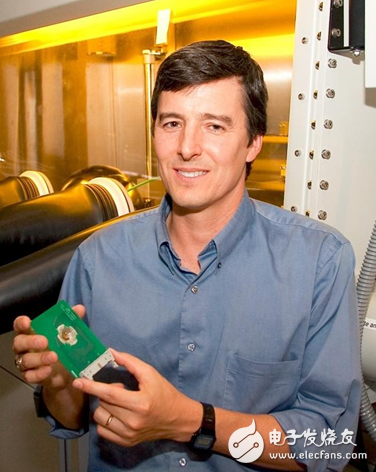
John Rogers
Professor John Rogers received his Ph.D. in physical chemistry from the Massachusetts Institute of Technology (MIT) in 1995. He then served as the head of the Condensed Matter Physics Study Group at Bell Labs. Since 2003, Professor Rogers has been a professor of chemical engineering at the University of Illinois at Urbana-Champaign. Since September this year, he has served as a professor and director of the Biointegrated Electronics Center of Northwestern University.
1. A wearable device capable of measuring the composition of sweat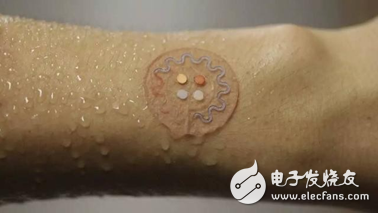
Pictured above is the epidermal electron developed by Professor Rogers to measure the composition of sweat during exercise. This beautiful wearable device is very lightweight and soft, with a medical grade acrylic film that is non-irritating to the skin. This material allows the patch to be stable, firm and seamlessly adhered to the skin, even in the hair. It can also be firmly adhered to the covered scalp or where it is very sweaty. It is very powerful, it can monitor the health of the user according to the metabolites and electrolytes in the sweat generated by the user's exercise, and synchronize the data to the smartphone in real time. However, this coin-sized skin patch is disposable and does not require charging itself, and is only effective for a few hours.

The reagents in the reservoir will change color after acting on the sweat.
This skin patch is superimposed by three parts: the first is an adhesive layer compatible with the skin that collects sweat. Followed by four separate circular "reservoir", each "reservoir" contains different reagents, representing glucose, chloride, lactate and pH, and when the sweat flows in, it will react with the reagents. A chemical reaction takes place and the "storage" color changes accordingly. Finally, there is a loop antenna that can pass data to the smartphone via NFC (Near Field Communication).
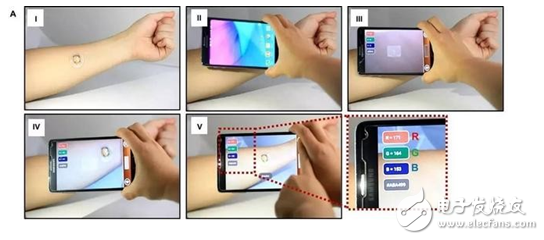
Analyze and analyze sweat components using a smartphone
The user will install a corresponding APP on the mobile phone. First, use the camera function of the smartphone to perform a "white balance" calibration to determine the light and shadow at this time. After calibration, the discolored "skin patch" was taken. According to the change of the RBG of the reservoir, the glucose, chloride, lactate and pH index in the collected sweat were determined. The researchers said that the unit of pH of 0.5 unit can be reliably measured, 0.2 unit. The concentration of sodium chloride, 0.3 units of lactic acid, and 0.1 unit of glucose corresponds to a 1% change in the R channel of the RGB image.
In the experiment, Professor Rogers found 21 healthy volunteers who put this "skin patch" on their arms and back. Nine volunteers were cycling in the gym and another 12 volunteers participated in the outdoor long-distance bicycle race in Tucson. To compare the results, the researchers blotted the volunteer's sweat onto a paper pad and sent the wet sample to the lab for analysis. The end result is that “skin patch†works both indoors and outdoors, and the results of measuring sweat are consistent with traditional methods.
"It seems to be really practical," said Bao Zinnan, a professor of chemical engineering at Stanford University. She also works on new biomedical materials, but she did not participate in the study. By simply looking at a color change, "such patches let people understand their health and know how the sport changes."
At the beginning, Professor Rogers's goal was to remind people to replenish electrolytes and prevent dehydration during exercise by using this “skin patchâ€. But as the research progressed further, Rogers imagined more complex scenarios, such as real-time monitoring of the body during military training, and even screening people with diabetes or cystic fibrosis.
2. Wearable devices that utilize mechanical waves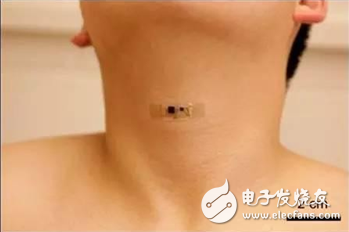
Another study was the development of epidermal electronics jointly developed by the University of Colorado at Boulder and Northwestern University. This wearable device is equally powerful, capable of measuring ECG, EMG through the mechanical waves of the human body, and as a human-machine interface for controlling external machines. Participants in the joint research were Jae-Woong Jeong, an assistant professor at the University of Colorado, Professor Huang Yonggang from Northwestern University, and John Rogers.
There are two main types of mechanical waves in the human body, water waves and sound waves. Water waves are produced by the agitation of human body fluids. Sound waves are generated by human body vocal vibrations and airborne media. The two mechanical waves contain huge information on clinical applications. However, the frequency and intensity of the two mechanical waves are beyond the human hearing range, and only the stethoscope or digital accelerometer can be used to collect relevant information, but this method is not suitable for continuous, real-time collection mode.
This soft skin electronics is only 20 mm thick and weighs only 213.6 mg. It is made of soft material and can adapt to the curvature of the human body. The outermost silicone rubber can evaporate the body's sweat, so it can be "sticked" anywhere in the body. .
Don't underestimate this epidermal electron, which continuously monitors the mechanical waves propagating through tissues and body fluids in the human body, reveals the unique acoustic characteristics of the human body, monitors heart health by continuously collecting data on the opening and closing of heart valves, and collects vibrations by collecting vocal cords. Data to identify "words" from people, and even to monitor intestinal peristalsis.
"This sensor is very light and can be used for cardiovascular monitoring, speech recognition and human-machine interface in daily life," Jeong said. "It's very convenient and comfortable, and it can be seen as a miniature, wearable stethoscope."
Sensor composition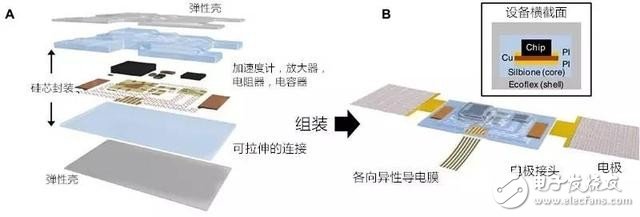
The outermost layer of this epidermis is a soft, very well stretched layer of elastic silicone rubber encased in miniature accelerometers, amplifiers, resistors and capacitors. The accelerometer has a vibration frequency of 0.5 to 550 Hz, and the mechanical waves emitted by vital organs of the body are between this range. And the different electrodes can be combined, for example combined with the electrodes recording the ECG (electrocardiogram) signal, to monitor the activity of the heart. When combined with the EMG (electromyogram) signal, muscle activity during rest and contraction can be monitored. When it is connected to an external data acquisition system, it becomes a wireless device. Jeong believes that this miniature sensor is especially suitable for telemedicine, helping doctors make quick and accurate judgments.
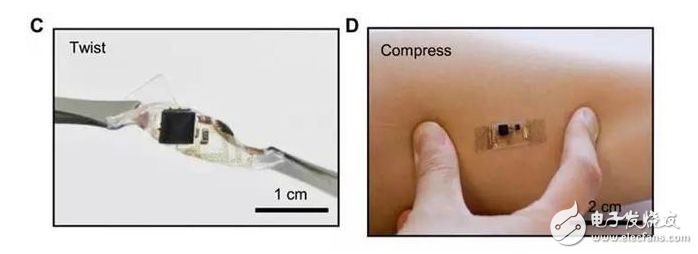
The sensor is very malleable and can be easily attached to the skin
Researchers at Camp Lowell Cardiology, a private clinic at the University of Arizona, selected eight elderly volunteers. The epidermis was electronically attached to the subject's aorta, lung, tricuspid, and mitral valves (ultrasonic probes). Positioning). The end result is that it monitors ECG activity and detects heart murmurs compared to commercial stethoscopes. In subsequent studies, it can also be used to monitor ventricular assist devices (LVADs), as well as to detect "blood clots" in the blood, which helps prevent thrombosis.

Controlling Pac-Man as a Human-Machine Interface
On the other hand, this epidermis has the ability to recognize speech. The researchers attached it to the throat of the human body. By capturing the electromyogram (EMG) signal of the vocal muscle group, the epidermis has the function of speech recognition as a "human-machine interface" for controlling external machines. In the experiment, the subject's throat is covered with epidermal electrons. By saying "up, down, left, and right", the subject can control the "Pacman" game with an accuracy rate of 90%.
Compared to the voice recorded by the microphone, since the epidermis electrons are attached to the skin, the recognized speech is substantially unaffected by the noise. In a noisy environment, the quality of the recorded voice of the microphone is significantly reduced, and the epidermal electronics are hardly affected.
Researchers believe that this skinned list can be used as a human-machine interface to send commands to the computer. The future application prospects are very broad and can be used to control games, drones and unmanned vehicles. In addition, it is especially suitable for speech recognition in a noisy environment like "battlefield."
Researchers believe that although there have been many epidermal electronics before this, this sensor is the first to verify that the body's mechanical waves can be used to monitor health and recognize speech. Next, the researchers hope to increase the frequency of the mechanical wave monitored by the sensor to 2000 Hz, becoming a microphone for monitoring voice in all directions.
For Huawei Glass,Huawei Honor Oca Glass,Lcd Screen Glass With Oca,Optical Clear Adhesive Glass
Dongguan Jili Electronic Technology Co., Ltd. , https://www.jlglassoca.com